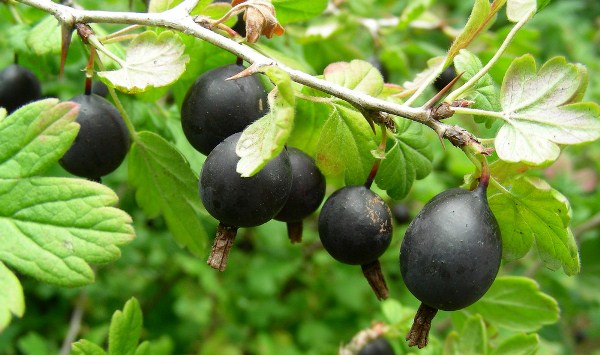Each summer resident dreams to decorate his plot with bright flowers, various shrubs, conifers, stately ferns. Implement it in many ways. Particularly interesting is the possibility of obtaining a harvest of delicious berries. on the beautiful, powerful, strong, serving as a green fence plot. Among them, one can now see Ribelarium (yoshtu) - in common people it is called a hybrid of currant and gooseberry, which we will talk about.
Table of contents
Description of a hybrid of blackcurrant and gooseberry
You will not meet a plant among wild forest thickets, at coast of the rivers, lakes, other places of the wild nature. How, for example, Karelian golden currant, other shrubs. It was obtained as a result of the difficult work of breeders from different countries. The first results of the production of a fruiting yoshta variety became known in 1959 from the works of German breeders.. Hence the name, including the German meanings of the words currant, gooseberry.
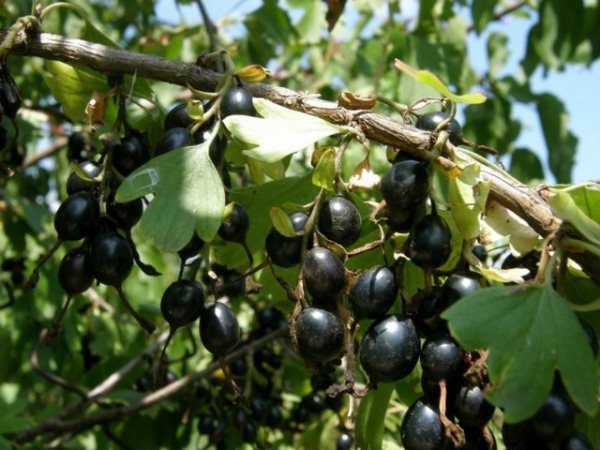
Attempts to get a hybrid that does not contain thorns, like on the gooseberry, to be resistant to the appearance of common diseases of currants, have been made for a long time. The mechanism of the process is detailed in the works of Michurin. But only specialists from the Max Planck Institute in Germany, using methods of radiation, chemical effects of distant hybridization, after forty years of hard work, managed to cross gooseberry and currant and get the first yoshta varieties with sustained fruiting, pronounced signs of a new plant. The period of formation of the first fruits begins in the second year of development.. The maximum yield is typical for most varieties in the fourth year of growth. In Russia, a mixture of gooseberry and currant appeared in the early 1980s.
The shrub covered with dark, green leaves, resembling gooseberry leaves, reaches two meters in height. They have no strong smell of currants. The leaves fall from the bush in late autumn. Stems long, without thorns. The average number of stems of an adult plant is 12 pieces. The roots reach a depth of 50 cm. The diameter of the crown reaches two meters. Blooms early bright yellow tassels. In addition, self-pollination is recommended close to plant currant bushes, gooseberries. Fruiting brushes are short, decorated with large berries of black color, shining in the sun, with a violet shade. The beginning of the receipt of the first berries occurs in July.
The duration of the active life of the bush Yoshta is up to 30 years at a selected landing site. The number of new shoots growing from the roots is not large. Their number can be increased by agrotechnical methods of regular hilling. Ribelaria has immunity to numerous pests, diseases characteristic of parent plants.. Yoshta varieties are cold resistant.
Famous varieties of yoshta
Yohini
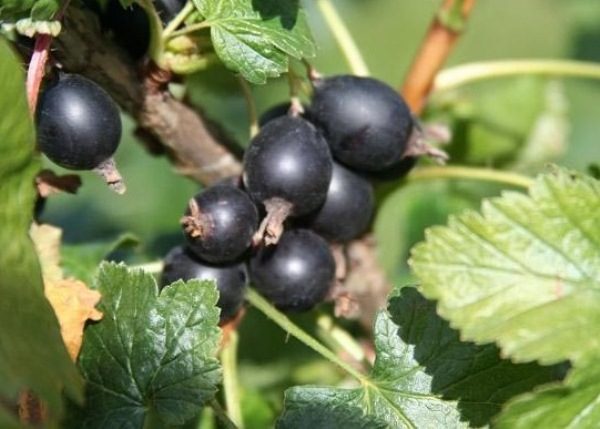
Yohini called one of the first varieties of the long-awaited hybrid. Tall bush more like a currant. The leaves do not have the smell of currants, do not fall for a long time. The variety has very sweet large fruits. Yield from one bush can be up to 10 kg. This is considered a high figure among other varieties.
EMB
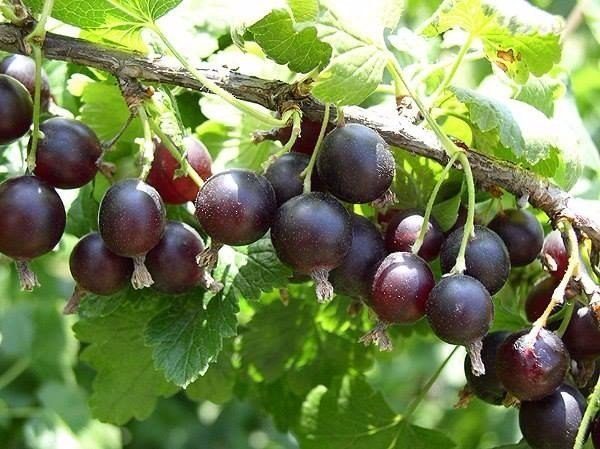
English plant variety. Semi sprawling bush. It grows to two meters in height. The taste of the berries is similar to gooseberry. The variety is characterized by a long alternate type of ripening berries.reaching two months.
Crown

Upright Swiss yoshta variety. The berries are small, dense, black, resembling currants. Low-yield variety. Its advantage is the long presence of berries on the stems without shedding.
Rext
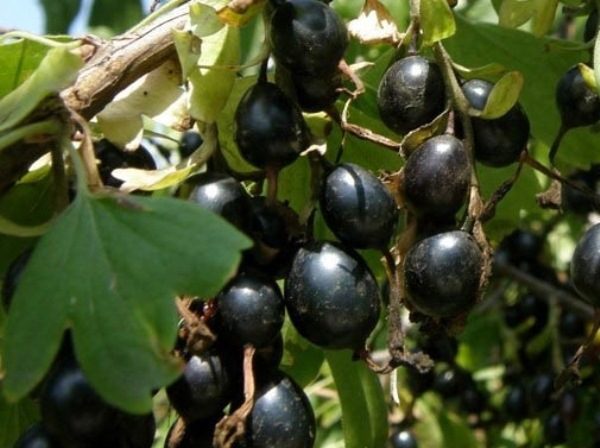
The variety obtained by domestic breeders is highly resistant to tick infestation and severe frosts. The yield of berries is average. Recommended by specialists for planting in cold zones of Russia.
Moro
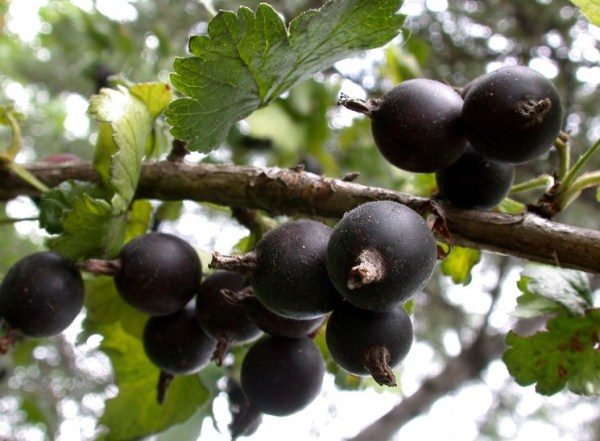
Tall, not very sprawling bush gives a good harvest of berries the size of a cherry. Every year, new varieties of plants appear on the seedlings market, making more varied choices.
Landing
Planting plants produced in the early autumn, in the spring. In any case, yoshta gets accustomed well, grows quickly. Planting material must have a developed root system. Do not use dried seedlings with shriveled bark, dry, weak roots. It will grow slowly, will not give the harvest.
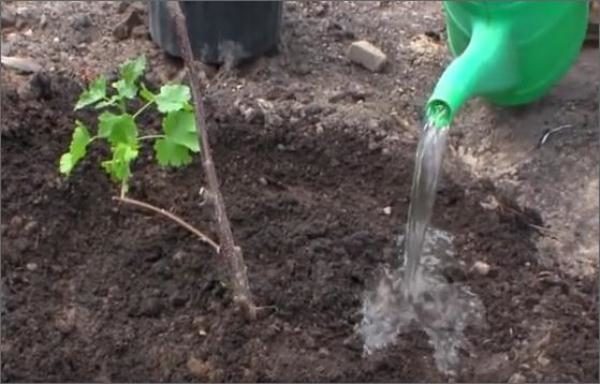
Before planting, the roots are recommended to stand for about 2 hours in the prepared solution of fertile soil, soaking them well, straightening. Dropping into the hole, they are well straightened, watered. Compost, humus, and mineral fertilizers are introduced into the landing hole. The difference in the planting process from currants is a higher need for potassium, which is introduced before planting. The following set of fertilizers for one plant that are necessary in the initial period of growth are considered optimal: about 5 kg of organic matter, 40 g of potassium sulfate, 60 g of superphosphate. The soil in the planting pit, around the plant is well watered, mulch. The distance between the plants is planned to be about 1.5 m. Between the rows, it increases to 2 m.
Reproduction and care
The principle of growing shrubs differs little from the methods of currant and barberry care. Need to know that Yoshta requires mandatory mulching under the crown. This prevents the evaporation of moisture, very necessary for the development of the bush. The plant must be abundantly watered.
The bush does not require a special pruning, which serves as an agrotechnical device for the formation of a crown. It is enough to perform it in the role of sanitization, getting rid of dry,damaged stems.
The plant is responsive to fertilization, starting from spring days in the form of solutions from chicken droppings, mullein.
Cuttings
For cutting suitable annual shoots, cut in winter. Immediately after harvesting, they are immersed in water for three hours. Then put in the package, the refrigerator until the arrival of spring, when they are put in a hothouse. In place of the plant is transferred in the fall. The universality of the method of propagation by cuttings is associated with the ability to engage in the process at any time of the year.. For example, in spring, in August, you can cut the tops of the side branches about 20 cm long. Cut off the lower leaves, keeping the upper ones after shortening them to one third of the length. Make a weak incision above each kidney. At the bottom of the cutting also make several cuts, stimulating the rate of root growth. Having processed the cutting growth stimulator, plant it obliquely in a greenhouse or under a plastic volume. Liberally pour. When performing work in the early spring, in the fall a strong seedling will be ready.
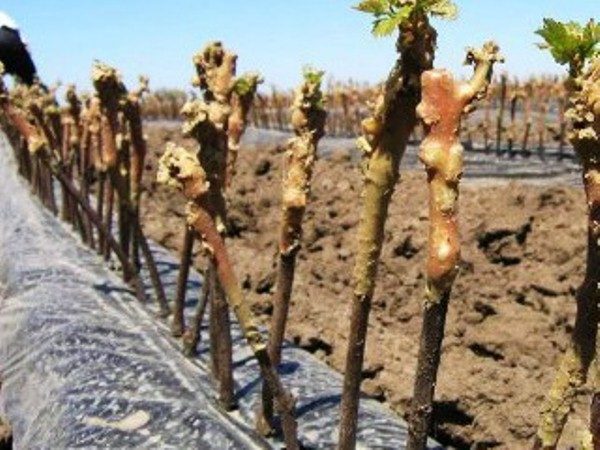
Often for breeding lignified cuttings are used, cut from ripe stems. At least 20 strong buds should be present on 20 cm pieces.. Planted obliquely, leaving two buds above the ground. The bed with cuttings is often plentifully watered to allow the formation of a powerful root system in just one season.
Layering
This type of reproduction can be carried out by vertical, horizontal layers of stems. In the first case in the spring of the entire old bush is cut off, hemp remains up to 25 cm. With regular watering, care, like a real bush, young shoots appear on them, which are used for propagation.
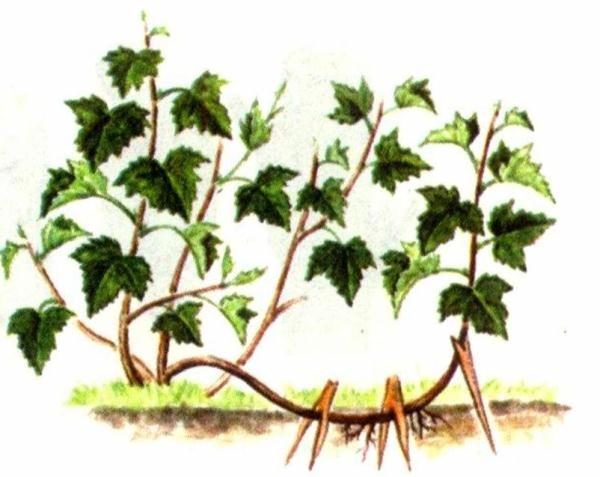
The second method is the easiest, most convenient. For the rapid formation of new plants in the spring of two-year, strong annual shoots growing in the lower part of the bush, pressed to the ground, covered with fertile soil. Slightly shortens the tip of the branch. A large number of shoots grow from the buds located under the upper layer of fertile soil.. Several times during the season they are spud, fed, watered, weeds are removed. Strong seedlings are ready for planting in a permanent place in the autumn, in the spring of next year.
Dividing bush
The method is effective from the point of view of quickly obtaining planting material.It is recommended to apply, if necessary, the transfer of the plant to another place, the desire to increase the number of yoshta bushes. To do this, use the bushes, age, which is not less than six years. In the spring, in the autumn the bush is dug out completely, free from the earth, weak roots. The ax is divided into parts that have at least three strong roots, several stems with good buds. Damage sites fall asleep with coal. Planted immediately to a permanent place.
Transfer
The following reasons are a justified reason for transplanting a fruiting yoshta bush:
- The bush is old.
- Bad choice of locationfor example, lack of solar heat, reducing the annual yield.
- Dimensions of the bushinterfering with other plantings, buildings.
- Strong depleted soil in a place of continuous growth.
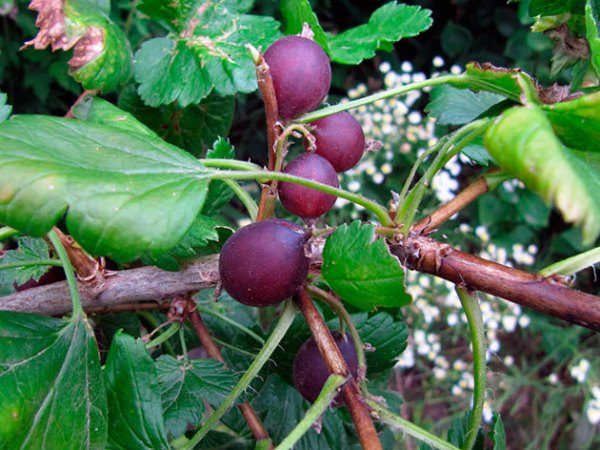
The order, the list of agrotechnical techniques during transplantation corresponds to the satisfaction of the needs of shrub growth.Fertile soil, the size of the planting pit, the abundance of light, the possibility of regular watering, fertilizing should be maintained, as during the initial planting. Carefully prepare the transplanted bush to move to a new location.. Old branches are removed, young ones are shortened. After a careful removal from the ground, it is desirable to divide the bush into parts, planting them in separate pits, not forgetting to feed them, water it abundantly.
Conclusion
Unfortunately, Yoshta industrial cultivation is still underdeveloped.. Try, see the beautiful berries can not so often. The cultivation technology in the near future will make it as accessible, indispensable as currants.
